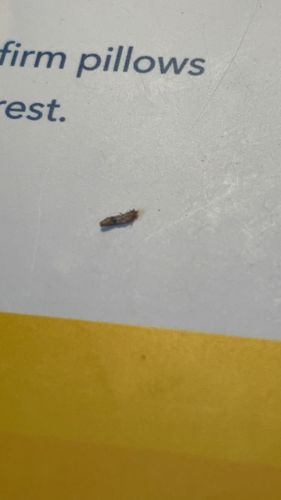Carpet beetle larva (likely varied carpet beetle or furniture carpet beetle)
Scientific Name: Likely *Anthrenus verbasci* (varied carpet beetle) or *Anthrenus flavipes* (furniture carpet beetle), without more detailed examination, it's hard to specify exact species.
Order & Family: Order: Coleoptera, Family: Dermestidae
Size: Larvae range from 2mm to 5mm (0.08 to 0.2 inches) in length, varying based on species and developmental stage. They are typically oval-shaped and hairy or bristly.

Natural Habitat
Indoors, larvae are found in carpets, rugs, furniture, animal trophy mounts, stored clothing, and pantries. Outdoors, adults are common in gardens and on flowering plants.
Diet & Feeding
Larvae primarily feed on natural fibers such as wool, silk, fur, feathers, and leather. They also consume pet hair, lint, and dried animal products. Adult carpet beetles feed on pollen and nectar from outdoor plants.
Behavior Patterns
Carpet beetle larvae prefer dark, undisturbed areas. They are often found in closets, under furniture, or in drawers where items like wool, silk, or fur are stored. They move slowly and will play dead when disturbed. The adult beetles are attracted to light and are often found near windows in homes.
Risks & Benefits
Risks: Carpet beetle larvae can cause significant damage to household items made of natural fibers, including clothing, carpets, and upholstered furniture. They can also infest stored food products, especially those of animal origin such as dried meat or pet food. Some people may experience allergic reactions or skin irritation from contact with the larvae or their shed skins. Benefits: In natural environments, carpet beetles play a role in decomposition, helping to break down animal remains and other organic matter. However, their presence indoors is generally considered a pest issue.
Identified on: 8/25/2025